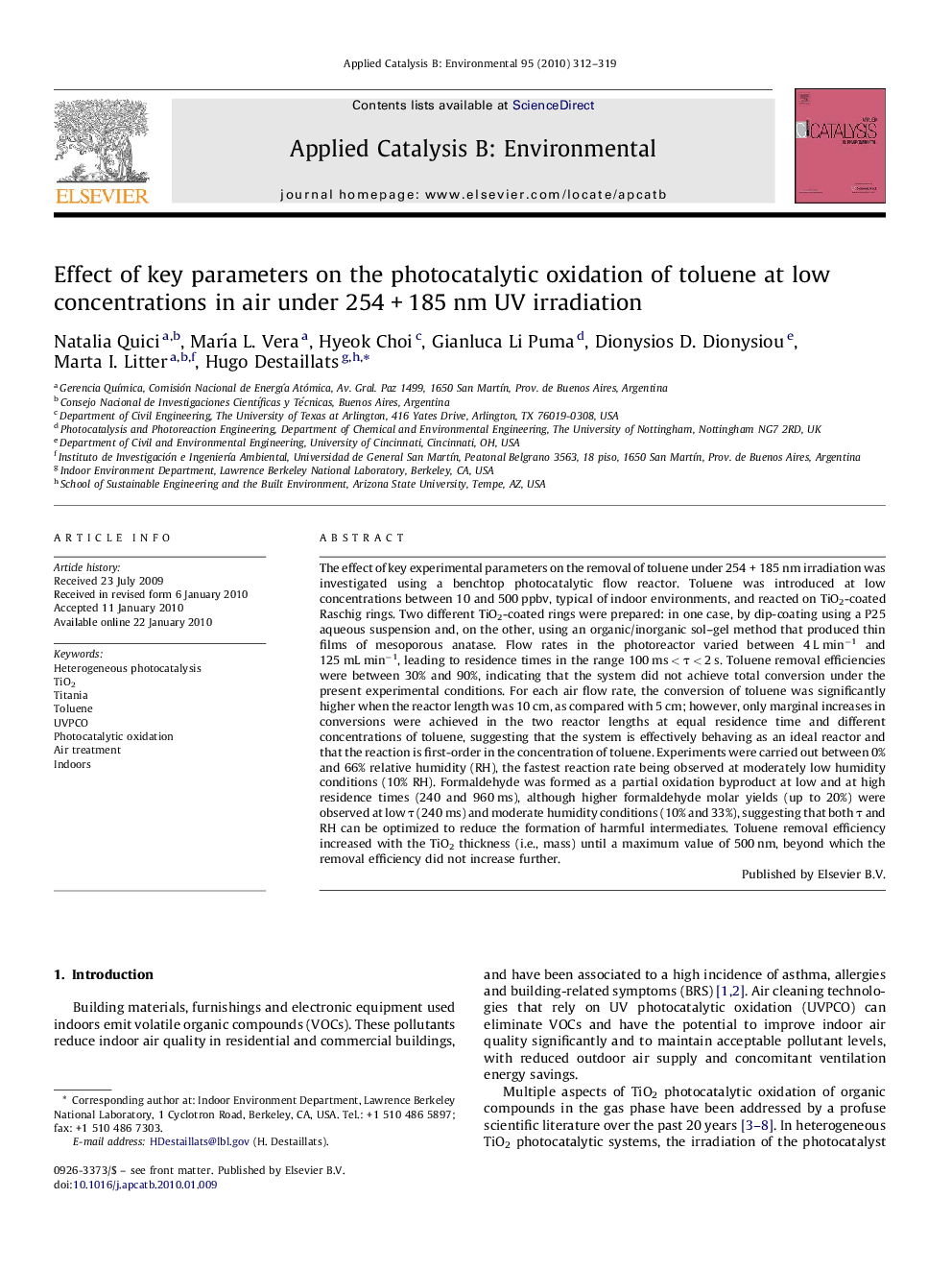| کد مقاله | کد نشریه | سال انتشار | مقاله انگلیسی | نسخه تمام متن |
|---|---|---|---|---|
| 47486 | 46473 | 2010 | 8 صفحه PDF | دانلود رایگان |

The effect of key experimental parameters on the removal of toluene under 254 + 185 nm irradiation was investigated using a benchtop photocatalytic flow reactor. Toluene was introduced at low concentrations between 10 and 500 ppbv, typical of indoor environments, and reacted on TiO2-coated Raschig rings. Two different TiO2-coated rings were prepared: in one case, by dip-coating using a P25 aqueous suspension and, on the other, using an organic/inorganic sol–gel method that produced thin films of mesoporous anatase. Flow rates in the photoreactor varied between 4 L min−1 and 125 mL min−1, leading to residence times in the range 100 ms < τ < 2 s. Toluene removal efficiencies were between 30% and 90%, indicating that the system did not achieve total conversion under the present experimental conditions. For each air flow rate, the conversion of toluene was significantly higher when the reactor length was 10 cm, as compared with 5 cm; however, only marginal increases in conversions were achieved in the two reactor lengths at equal residence time and different concentrations of toluene, suggesting that the system is effectively behaving as an ideal reactor and that the reaction is first-order in the concentration of toluene. Experiments were carried out between 0% and 66% relative humidity (RH), the fastest reaction rate being observed at moderately low humidity conditions (10% RH). Formaldehyde was formed as a partial oxidation byproduct at low and at high residence times (240 and 960 ms), although higher formaldehyde molar yields (up to 20%) were observed at low τ (240 ms) and moderate humidity conditions (10% and 33%), suggesting that both τ and RH can be optimized to reduce the formation of harmful intermediates. Toluene removal efficiency increased with the TiO2 thickness (i.e., mass) until a maximum value of 500 nm, beyond which the removal efficiency did not increase further.
Journal: Applied Catalysis B: Environmental - Volume 95, Issues 3–4, 6 April 2010, Pages 312–319